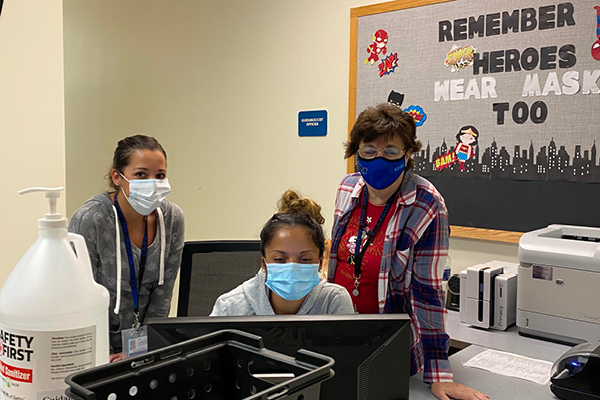During your career as an educator, you had many discussions with different stakeholders about changing the face of education. You also had multiple sessions about ridding your students of the high-stakes, standardized testing that cause needless anxiety. Numerous times you wanted to explore the endless possibilities of blended learning, remote experiences, and multiple facilitators. Did you think it would happen overnight?
The COVID-19 pandemic has created a lot of unknowns but it has also allowed us the opportunity to do things differently. The people in my circle grasped the moment to fine-tune the quality of what we controlled. How has it changed the conversation?
Keep expanding your groups of people that make you feel like what you do matters. As you expand your control, you broaden your positive influence.
Many of us have stayed abreast of trends and best practices with a review of the literature and taking the risk of applying it immediately. Because most everyone had to include Zoom as part of our new teaching and learning repertoire, overnight we became semi-pros in that realm of delivery. The new anti-etiquette term “Zoombombing” was invented instantly.
I was fortunate to stay in touch and collaborate with my friends and professionals all over North America. We scheduled meetings weekly, created new forums on social media, and supported each other. We are not alone. There is no new normal. Drop that thought immediately. Press forward with what you can control. Abandon what has not worked.
During their careers, the truly great teachers were always uncomfortable as they pushed their limits and took calculated, creative risks. This initiated best practices with many failures as well as success stories. Likewise, exemplary administrators need to support these collaborative efforts and examine a new wave of victories.
As we move forward with masks on, six feet apart, disinfecting and washing our hands frequently, or working in a remote location while multitasking here are five things to consider:
- The time has never been better than to consider the whole child model. Fortunately, middle level educators are ahead of the curve on that. AMLE has a plethora of resources on their website. If you are not balanced in body, mind, heart, and spirit, the short term may be survivable, but your long-term success is in jeopardy.
- Network, network, network! It’s out there. A variety of resources appear on Twitter, Instagram, Pinterest, Facebook, and LinkedIn to name a few. Find your professional learning network (PLN). Start a PLN of your own in your school and district.
- Support each other. Even if it’s not face-to-face, do not spend time in isolation or allow your colleagues to feel alone. Our whole child model is just as important to use with adults as it is with the students. Stay balanced.
- As absurd as it may sound to some people, have fun. There are multiple activities you can do online as well as in person.
- Make sure the students know what is important, and they feel supported.
Stay safe, Stay well.
Frank Rudnesky, Ed.D. is a retired principal and currently an author, speaker, and presenter.
![]() FrankRudnesky@gmail.com
FrankRudnesky@gmail.com
http://inspire-leadership.com
Published October 2020.
